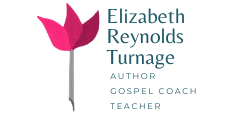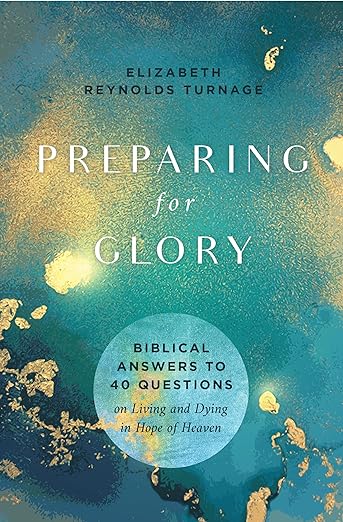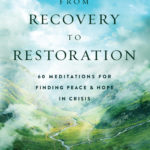by Elizabeth | Jan 27, 2014 | Learning Story
Today, as I conclude this short series on spiritual graces, I invite you to sit with me and hear God’s invitation to delight: rest.
Remember, if you’d like to receive Living Story blogs in your inbox, you can sign up here.

Rest for some is playing with God in the sand.
It sounds so kind, so gentle, so — well, restful.
Come to me…
all who labor
and are heavy-laden…
[are you identifying with this yet?]
and I will give you rest.
- It is a lullaby sung over a child in warm footie pajamas.
- It is a friend waving to us from across the street, inviting us to come have coffee.
- It is a gold-embossed invitation from the prince to the coronation ball.
Jesus, the lover of our souls, beckons us, and what I’m wondering is why, with an invitation like this — we resist rest.
Rest, menuach, according to the Hebrew, expresses more than just an absence of activity. Its purpose is to celebrate life and joy, to languish in the peace God lavishes, to imagine the days to come when there will be no more tears.
For Christians, it is a rich feast to remember that Christ has loved us and offered the perfect sacrifice that allows us to cease striving and know that all is well. It is a taste of the feast to come, when we will gather around a table in peace with those we’ve loved and hated in life, finally reconciled, finally restored.
So why don’t we rest? So many reasons, but today let’s just consider one:

Rosie-dog dares to risk rest — with frequency:-)!
It’s too risky.
- What if we lie down but can’t go to sleep?
- What if we dress up for the ball and the Prince ignores us?
- What if Jesus was waving to someone else?
He couldn’t have meant me. He couldn’t really mean I can stop laboring.
- I know I need to have better quiet times for God to want to spend time with me.
- If Jesus really knew who I am, he’d never ask me to the ball.
- And if I go for coffee, it will be tense because I’m so disappointed in God right now.
Isn’t it better to just keep moving, stirring the noise, in case there is no song to be heard in the silence of rest?
 It’s risky. Really, who has that kind of gumption?
It’s risky. Really, who has that kind of gumption?
Not me.
But there’s some good news here. You knew there had to be, right?
Here’s a little interesting tidbit. The word in the Greek literally means to “cause to rest.” Jesus isn’t just offering us rest. He’s making us rest. Because he knows our hearts. He knows we struggle with sin, and fear, and shame, and pride. He knows we don’t think we deserve a break unless we’ve earned it. And he knows we’ll never earn it. That’s why he died. For our sin. So we could rest — from the guilt, the sin, the shame.
Stop. Do you hear him? He’s singing to you.
Come to me. All you who labor. [Do you labor?]
All who are heavy-laden [What burdens, doubts, fears, shame are you carrying?].
I have made it possible for you to rest.
I will bring you to the ball because you can’t bring yourself.
Now for the dare:
Step away from the computer. Go somewhere or stay right where you are. Do you hear the singing? Do you see the couple dancing? Will you go sit with Jesus? It’s terrifying, but it’s true. God delights in you, and Jesus is causing you to rest in that.
by Elizabeth | Nov 20, 2013 | Learning Story
One of my great privileges as a Christian life story coach is to walk alongside people as they discern and decide which paths to pursue regarding their daily work. Approaching these decisions is easier when we understand that in our redeemed state, we have “jobs” to do: “God’s ambassadors,” “ministers of reconciliation,” and “disciple-makers” among them. The Bible tells us we are teeming with meaning, shimmering with the glory of the Creator who made us just so.
With that knowledge as a background, we can dive into some practical ways to determine directions for our particular work. Here are 5 ideas to help you figure out what work you might do.
- Explore your story. Consider your personality (there are many online inventories for this), the roles you enjoy performing, your passions, values, history, gifts, and broken places.
- Draw your dream. Even if you’re not an artist, this exercise can bring more clarity to your vision. Drawing or painting opens your imagination to new possibilities and gives you a picture of where you want to go. Don’t worry about perfect representation — stick figures and icons will suffice. Try doing a 2 year, 5 year, and 10 year dream. (If you really don’t want to draw, consider writing a fictionalized story).

I drew two of the things I do: coaching and writing, to get a better sense of why I do them. As you can see, drawing is not my strong point!
- Make lists. If you have several different fields you are considering, list the costs or challenges against the benefits or joys of each. List places you might want to work, including cities or areas of the country. List the type of people you’d like to work with. The possibilities for lists are endless.
- Do the research. If you think you’d be interested in owning a bakery, interview some bakery owners and ask questions about what it took to start their business. If you are interested in a particular job, like wildlife conservation, find out what education you need to have to do that. Search online for ways to get the education or certification you need to do the work.
- Pray and read Scripture. (This comes near the end because it should weave through everything). Not only does prayer acknowledge that God is sovereign over this process, it also helps you to see more clearly. Write out verses that encourage you or make you curious. Pray before you interview someone for research. Write a prayer about your “dream drawings.”
- Talk with others. Ask friends and family for insights; even those you differ with may see something you don’t. Sometimes it can be helpful to work with a career counselor or a life coach who will partner with you to brainstorm, observe, ask helpful questions, and keep you on track.
These are just a few ideas to get you started. I’d love to hear from you…
- What other tools have you used to discern what work you might do?
- Have you tried any of the suggestions listed, or are there any you’d like to try? If you’d like to try one, mark a date on your calendar for working on it and a date to be finished and ask a friend to check with you.
by Elizabeth | Nov 11, 2013 | Learning Story

Here I am at another run that year, cheered on by two great witnesses, two of my children!
Today marks two weeks since a hip arthroscopy performed to treat something called FAI, I decided I would search through the 700-plus-something posts I’ve written in the last 5 years and recycle. I thought I had published something for Veterans’ Day before, but lo and behold, when I searched on Veterans, I found this post. Wow, to think — just 3 and a half years ago, I was running a half-marathon. The truth of the post applies equally to recovery, some thoughts I may continue as recovery progresses. Meanwhile, from April 4, 2010
Thirteen point one miles of hilly country in humid conditions, I am THANKFUL! Thankful to God our Provider who held the rain until many if not most had finished the half. (I am sad for those marathoners who trained so hard but were prevented finishing because of severe weather spotted:(. I’ve done a number of half-marathons in the past twenty years, coming out of running retirement on occasion to run with a friend or to mark a milestone, or in this case, because my eldest daughter was running her first half (and she completed it with great success), but the Country Music Half remains one of the toughest courses because of the hills. What gets me through those ups and downs of the course are the wonderful spectators, the “great cloud of witnesses” who line the course cheering us on, telling us we’re doing well, encouraging us that we can make it. So again I thank those who lined the roads today, risking being rained upon, and I offer all of us the reminder that whether in life’s journey or a morning run, we need the “cloud of witnesses.” Who are the people who cheer you on on life’s strangely contoured journey? Thank God for them (and thank them) today!
“Do you see what this means—all these pioneers who blazed the way, all these veterans cheering us on? It means we’d better get on with it. Strip down, start running—and never quit! No extra spiritual fat, no parasitic sins. Keep your eyes on Jesus, who both began and finished this race we’re in. Study how he did it. Because he never lost sight of where he was headed—that exhilarating finish in and with God—he could put up with anything along the way: Cross, shame, whatever. And now he’s there, in the place of honor, right alongside God. When you find yourselves flagging in your faith, go over that story again, item by item, that long litany of hostility he plowed through. That will shoot adrenaline into your souls!” The Message, Heb. 12:1-3
by Elizabeth | Oct 23, 2013 | Learning Story

Flannery’s Prayers are available now for pre-order.
I don’t have my hands on the book yet, but I can’t wait to read the collection of Flannery O’Connor’s old prayers edited by W.A. Sessions. Reading a few of the excerpted prayers available in the New York Times and New Yorker, I wonder whether it is appropriate to read prayers that Flannery wrote to God — does that then make her prayers a performance of sort? It is one thing to read prayers someone wrote for the purpose of helping others pray, but I do wonder if Flannery herself ever thought her prayer journal would be published. I guess I’m going to have to get my hands on the book to learn that.
Meanwhile, here are a few excerpts that particularly struck me as a writer and as a woman always trying to get my “self” out of the way so I can love God’s glory and others can too.
“Dear God, I cannot love Thee the way I want to. You are the slim crescent of a moon that I see and my self is the earth’s shadow that keeps me from seeing all the moon. The crescent is very beautiful and perhaps that is all one like I am should or could see; but what I am afraid of, dear God, is that my self shadow will grow so large that it blocks the whole moon, and that I will judge myself by the shadow that is nothing.
I do not know you God because I am in the way. Please help me to push myself aside.
Give me the grace to be impatient for the time when I shall see You face to face and need no stimulus than that to adore You. Give me the grace, dear God, to see the bareness and the misery of the places where You are not adored and desecrated.
Don’t let me ever think, dear God, that I was anything but the instrument for Your story — just like the typewriter was mine.”
What do you think? Have you ever written out prayers? Did you write them for others to read, or for God’s eyes alone?
Try writing a prayer today. It’s really cool if you read Scripture first and tie the prayer into that Scripture. If you want people to read it, share it in the comments section or in a letter or on social media.
by Elizabeth | Oct 15, 2013 | Learning Story
The problem with writing a book is sometimes you are dying for everyone else to know some of what you wrote, but the book is still under the loving care of the publisher, not yet available to the public. Today it occurred to me that I could share small portions of the third book in the Living Story series. Here is the intro to the chapter called God Is Love. While you wait for the third book, be sure to check out the first two.

In truth, the brown Subaru that hit me was a little newer than this one and looked a lot better after it hit me.
The assignment was simple yet seemingly impossible to me: draw an aspect of God’s character. (It might have felt easier if I could draw!) It was the first night of a course called Spirituality and the Arts, and we had ten minutes to complete the exercise, so I picked up my pencil and began sketching. What I attempted to draw was a small, faded brown, 1989 Subaru with a female stick figure sliding down its hood. Large, strong, sinewy arms encircled the whole scene.
Earlier that day, during a pleasant morning jog on a nature trail that wound through a Seattle office park, I had been struck by that same brown Subaru. A truck-driver had waved me across the crosswalk, but neither he nor I saw the little vehicle moving in the lane next to him; nor could its driver see me. When I finally did see the car approaching, too late, watching in horror, even as my left side was falling on the hood, I remember two things – first, the sentence that played in slow motion through my mind, “So this is how I’m going to die.” And then, sitting on my rear, cross-legged, just as I had landed on the asphalt, repeating to myself over and over, “I’m not dead. I’m not dead.”
What I wanted to convey that night in class was the sovereign, ever-present, shielding, powerful love of God I now knew in a brand new way. The Bible asserts that love cannot be defined without God: “God is love” (1 John 4:8b). Love is a fixed reality about the nature of God – and God is a fixed reality about the nature of love. The narrative of Scripture characterizes God’s love as, among other things, steadfast, covenantal, merciful, gracious, sacrificial and transformational. Love is God’s prodigally generous, contra-conditional, eternal gift. And it is in this love alone that we as humans know love.
by Elizabeth | Oct 7, 2013 | Learning Story

Christ’s love melts frozen hearts.
The Sisterhood More-than-a-Bible-Study has been working through Scriptures and thoughts from Paul Miller’s book, Love Walked among Us. This past week, we wrestled with God as we sought to understand what it means to speak honestly with compassion as Jesus did. Here, in part, are a few ideas about how to “speak the truth in love.”
- Humble your-SELF. (Phil 2:5-11). If you are concerned about your own reputation, you will not risk loving in this way.
- Pray without ceasing, and ask others to pray as well. You desperately need wisdom from above (James 1:), so seek the Holy Spirit who gives it.
- Name sin for the purpose of inviting to repentance. Jesus exposed the Pharisees as hypocrites, because he wanted them to see their sin. He was distressed over their self-worship and invited them to worship him.
- Recognize there’s a good chance you will sin against the person you are speaking to, and rest in the reality of forgiveness.
- Be willing to disrupt as Jesus disrupts. Sometimes naming sin will turn our lives or others’ upside down.
- Recognize that God is not “safe” but He is “good.” In other words, God will disrupt our status quo and others so that we may love him more than ourselves or our own “peaceful” lives.
- Recognize that the person to whom you are speaking may not receive your words. In fact, they may become harder towards you (Exhibit A — The Pharisees). The question may be, “Do you believe God will take care of you in the painful fallout of trying to repair a broken relationship and meeting with a hard heart?”
- Remember your purpose — to glorify God and enjoy him FOREVER. That means at least in part that we have to trust him to change people — we can’t do it, even though he calls us to be part of it.
 It’s risky. Really, who has that kind of gumption?
It’s risky. Really, who has that kind of gumption?











![When’s the last time you highlighted your weakness?
Therefore I will boast all the more gladly in my weaknesses, so that the power of Christ may rest upon me. 2 Cor. 12:10
All-Powerful God,
We confess,
we in Western culture
crave power, control, and independence.
The last thing we want
is to seem weak.
And yet, weakness is the way of Christ,
so it must be our way as well.
The apostle Paul understood that,
so in the face of accusations
that he wasn’t an apostle,
he countered the boasting of the “super-apostles”
with some boasting of his own:
“If I must boast,
I will boast of the things
that show my weakness” (2 Cor. 11:30).
And then he mentions how he was lowered in a basket through the window of a wall in Damascus, of all places,
a place he went to persecute Jews only to be knocked down on the road,
struck blind, by his Lord and Savior himself.
Paul shares many other weaknesses in 2 Corinthians,
a book that’s all about weakness as the way
of followers of Christ.
He asked that you would relieve him from a “thorn in the flesh,”
but you did not.
Instead, you said,
“My grace is sufficient for you,
for my power is made perfect in your weakness” (2 Cor. 12:9).
Lord, we know we really are weak —
[for each of these areas, name any weaknesses you have]
weak in our bodies,
weak in our work,
weak in our wills,
weak in our faith,
weak in our hope,
weak in our love.
We believe
that you your power is made perfect
in and through our weakness.
Help our unbelief.
In Jesus’s name. Amen.
Read 2 Corinthians 11:30-12:10.
#Dailyprayer #devotional
#hopewriterlife #goodnewsfeed #votd #Biblestudy #dailydevotions #grace #dailyverse #womensministry #aging
#gospelshaped #shereadstruth #womenoftheword #christianliving](https://www.elizabethturnage.com/wp-content/plugins/instagram-feed/img/placeholder.png)